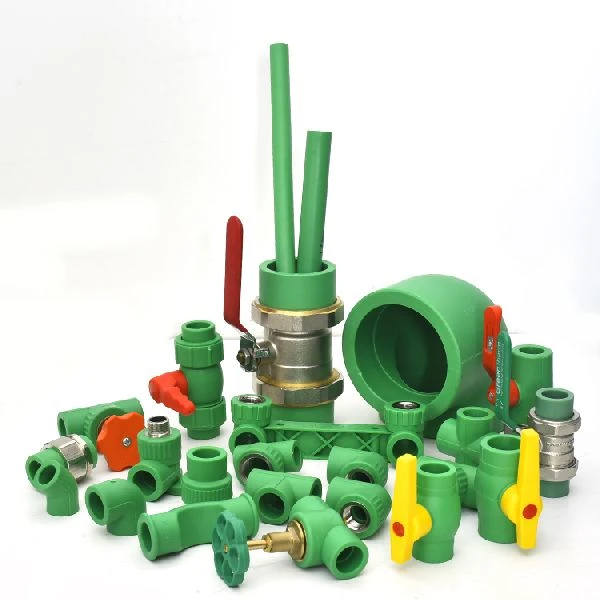
What are PPR Pipes?
Definition and Composition
PPR Pipes and Fittings are made from a high-quality thermoplastic known for its strength and resistance to heat and chemicals. Their random copolymer structure gives them enhanced flexibility and durability, making them perfect for various plumbing needs.
Advantages of PPR Pipes
- Corrosion Resistance: PPR pipes do not corrode, ensuring a longer lifespan.
- Thermal Insulation: They offer excellent thermal insulation, which helps maintain the temperature of hot or cold water.
- Lightweight and Easy to Install: Their lightweight nature makes handling and installation straightforward, reducing labor costs.
The Importance of PPR Hot-Cooling Water Pipes
Thermal Resistance
can handle high temperatures, making them suitable for hot water applications. They maintain structural integrity even under thermal stress, preventing issues like leaks or bursts.
Pressure Handling Capability
Designed to withstand high pressures, PPR pipes are ideal for systems that require reliable performance in demanding environments. This feature ensures they can handle fluctuations in water flow and pressure.
Features of PPR Hot-Cooling Water Fittings
Types of Fittings
PPR Pipes and Fittings come in various forms, including elbows, tees, couplings, and reducers, allowing for versatile installation options in any plumbing system. These fittings ensure seamless connections and reliable performance.
Installation Flexibility
The compatibility of PPR fittings with different pipe sizes and types means that they can be easily integrated into existing systems, offering flexibility in design and application.
Applications of PPR Hot-Cooling Water Pipes and Fittings
Residential Use
In homes, PPR hot-cooling water pipes are used for plumbing systems, providing efficient hot and cold water supply. Their durability and safety make them an ideal choice for family environments.
Commercial Applications
Businesses utilize PPR pipes for heating and cooling systems, as well as for potable water supply. Their ability to resist corrosion and chemical damage ensures longevity and reliability in commercial settings.
Industrial Applications
In industrial settings, PPR pipes are ideal for transporting fluids in processes that involve high temperatures and pressures. They are commonly used in HVAC systems, power plants, and manufacturing facilities.
Installation Guidelines for PPR Hot-Cooling Water Pipes
Preparation and Tools Required
Before installation, gather the necessary tools, such as a pipe cutter, welding machine, and measuring tape. Ensure all surfaces are clean and dry for optimal adhesion.
Step-by-Step Installation Process
- Measure and Cut: Cut the PPR pipes to the desired lengths, ensuring clean, straight edges.
- Join Fittings: Use a welding machine to heat the pipe ends and fittings, then quickly join them together, holding until cooled.
- Check Connections: Ensure all connections are secure and properly aligned.
- Test for Leaks: Once installed, conduct a pressure test to check for any leaks in the system.
Maintenance Tips for PPR Pipes and Fittings
Regular Inspection
Conduct regular inspections to check for signs of wear or damage. Look for any visible leaks or unusual sounds that may indicate a problem.
Cleaning and Care
Keep the pipes clean by flushing them periodically. Avoid using harsh chemicals that could damage the pipe’s integrity.
Conclusion
PPR hot-cooling water pipes and fittings are a reliable, durable, and cost-effective choice for various plumbing applications. Their thermal resistance, pressure handling capabilities, and ease of installation make them a preferred option for both residential and industrial uses.
FAQs
Can PPR pipes handle hot water?
Yes, PPR pipes are designed to handle hot water applications, making them suitable for plumbing systems that require hot water transport.
How long do PPR hot-cooling pipes last?
With proper installation and maintenance, PPR pipes can last over 50 years.
Are PPR fittings compatible with other types of pipes?
Yes, PPR fittings can be used with other pipe materials, but compatibility should always be verified based on specific applications.
What are the cost advantages of using PPR pipes?
PPR pipes typically have lower installation and maintenance costs compared to metal pipes, making them a cost-effective solution in the long run.
How do I choose the right size of PPR pipe?
Consider the flow requirements, pressure ratings, and the specific application when selecting the appropriate pipe size.